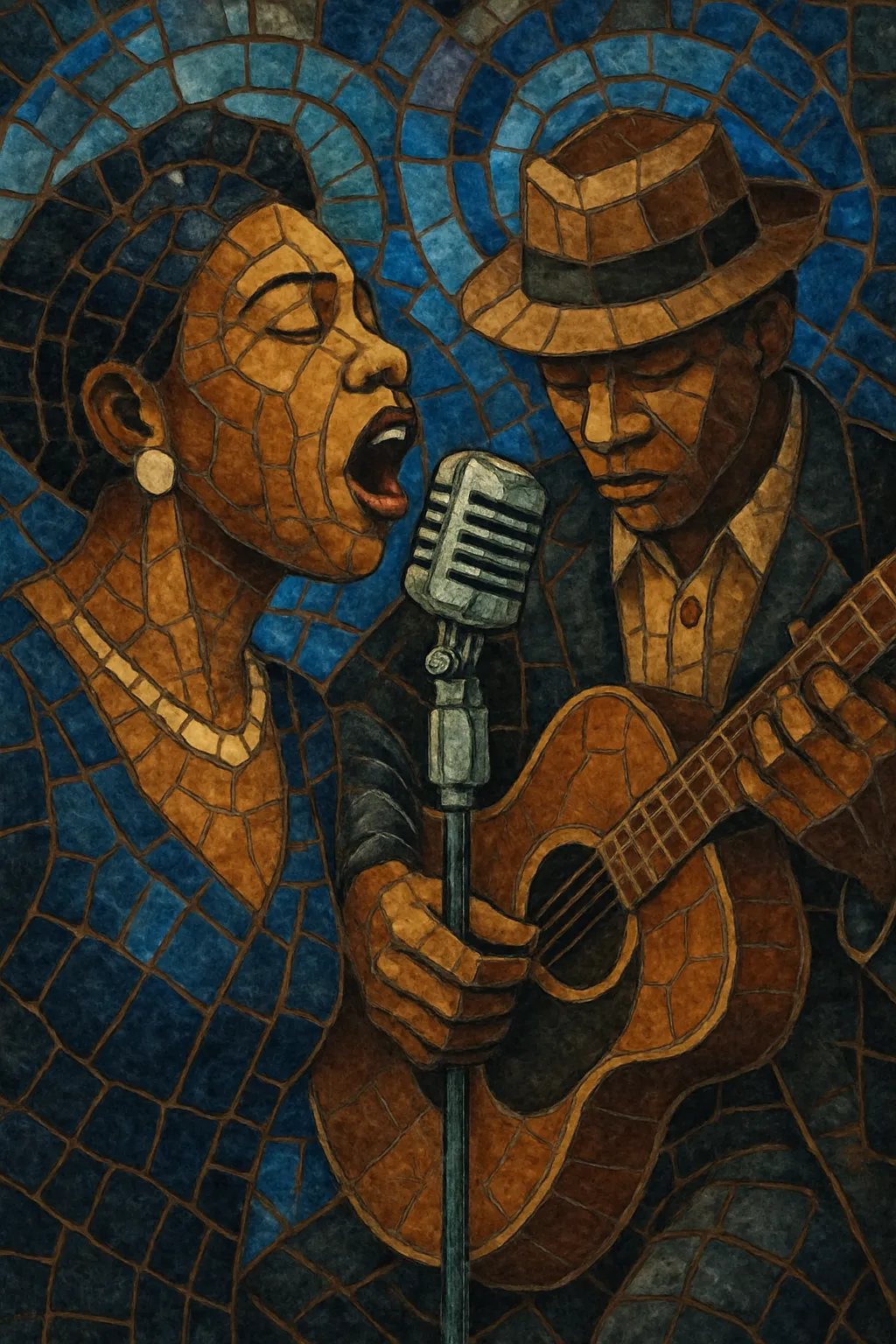
Classic blues (often called "classic female blues") is the early, urban, theater-bred form of the blues that flourished primarily in the 1920s. It is characterized by powerful lead vocalists—frequently women—fronting small jazz ensembles or a piano accompanist, with arrangements that translated the blues idiom to vaudeville stages and recording studios.
Musically it typically uses the 12‑bar blues form, AAB lyric stanzas, swung or shuffle rhythms in 4/4, and prominent use of blue notes (flattened 3rd, 5th, and 7th). The style sits at the crossroads of Southern blues traditions, ragtime and early jazz, and the songcraft and professionalism of vaudeville and Tin Pan Alley.
Classic blues differs from country/delta blues by its more formal arrangements, band instrumentation, and theatrical delivery. It launched the commercial “race records” era with Mamie Smith’s 1920 hit "Crazy Blues," and set the template for later jazz and R&B vocal performance.
Classic blues grew from African American folk-blues practices, spirituals, work songs, and ragtime piano, meeting the stagecraft of vaudeville and cabaret. W. C. Handy’s published blues (e.g., “Memphis Blues,” “St. Louis Blues”) helped codify harmonic and formal norms that singers brought to theaters and tent shows. By the late 1910s, a number of professional Black women vocalists were performing blues across the T.O.B.A. (Theater Owners Booking Association) circuit.
In 1920, Mamie Smith’s “Crazy Blues” became a runaway success, inaugurating the “race records” market and a decade-long boom for classic blues recordings. Stars such as Bessie Smith, Ma Rainey, Ethel Waters, Alberta Hunter, Ida Cox, and others recorded widely, typically with small jazz combos (cornet/trumpet, clarinet, trombone, piano, banjo/guitar, tuba/string bass, drums) or solo piano. The classic blues sound balanced vernacular blues feeling with professional arrangements and strong, theatrical vocal projection.
Core features included the 12‑bar form, AAB textual structure, swung eighths, stop‑time breaks, and instrumental call‑and‑response with the voice. Lyrics often explored love, betrayal, travel, economic hardship, and female autonomy, frequently with wit and double entendre. The repertoire drew on both traditional material and newly composed songs from professional songwriters and bandleaders.
The Great Depression constricted record sales, and the rise of big‑band swing and later urban/electric blues shifted tastes. While classic blues’ commercial presence diminished, its vocal style, repertoire, and phrasing profoundly shaped jazz singing, rhythm and blues, and ultimately rock and roll. Mid‑century revivals, reissues, and scholarship restored attention to the foundational contributions of classic blues artists, especially the commanding artistry of Bessie Smith and Ma Rainey.

